The Hrútárjökull is a glacier on the east side of the Öræfajökull, measuring 8 km and ranging from 1800 meters at its top to just above sea level at its snout. The tongue of Hrútárjökull used to merge with the Fjallsjökull, but this ended around 2010.
Thanks to the natural scientist Sveinn Pálsson, Hrútárjökull proved vital in developing new knowledge about glaciers. It was Sveinn who, in the late eighteen hundreds, came up with the idea that glaciers flow, as if they were some sort of liquid. When he stood in front of the neighboring Breiðamerkurjökull in 1793, he was struck by the idea that ice might seem solid, but could in fact move under the influence of gravity. Moreover, just like resin or tar it would coalesce. Up to that point, the academia thought the glacier was made up of frozen sea water, emerging from tunnels up-slope (Björnsson, 2017: 140). But local Icelanders, dealing with glaciers on a daily basis, probably already knew better.
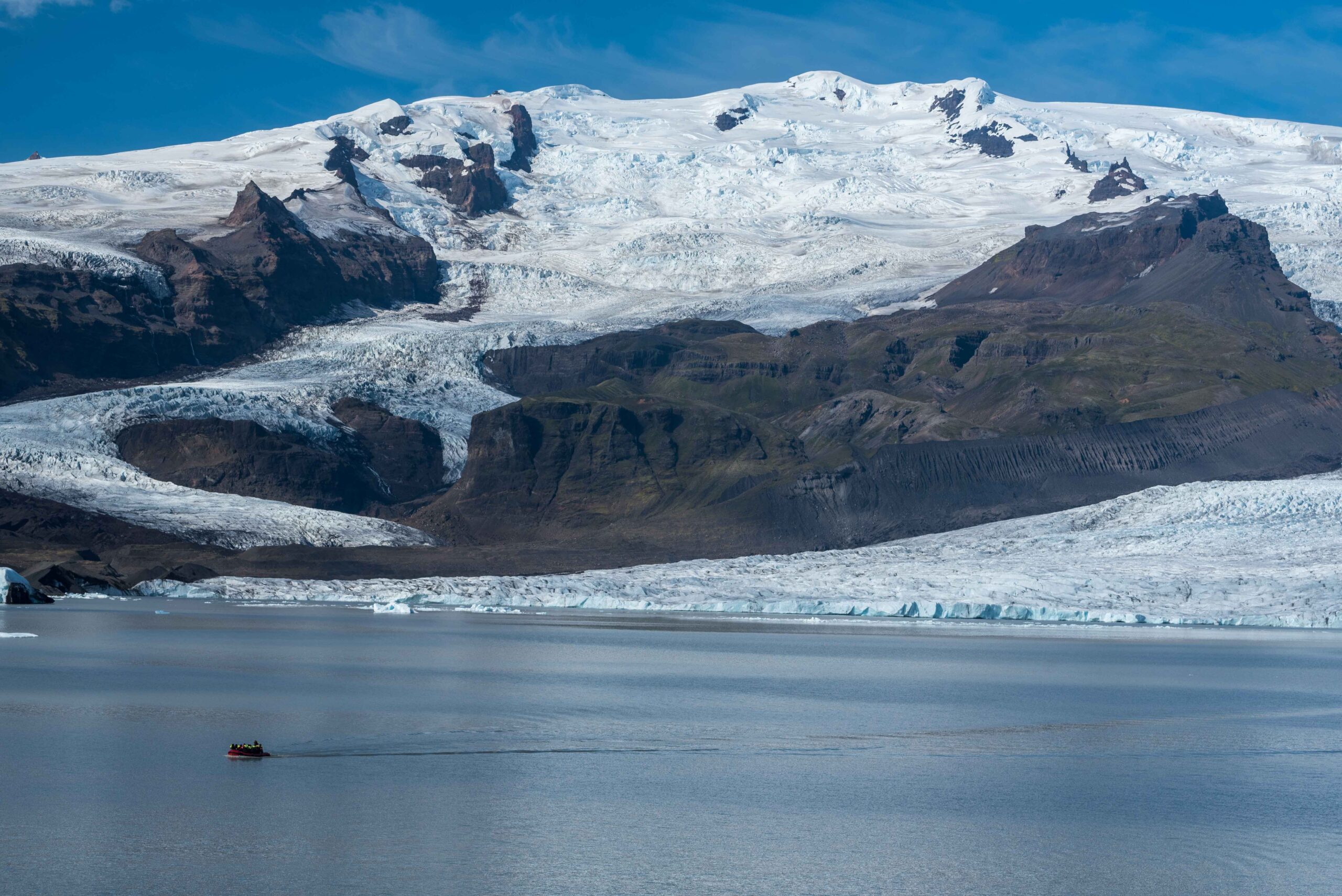
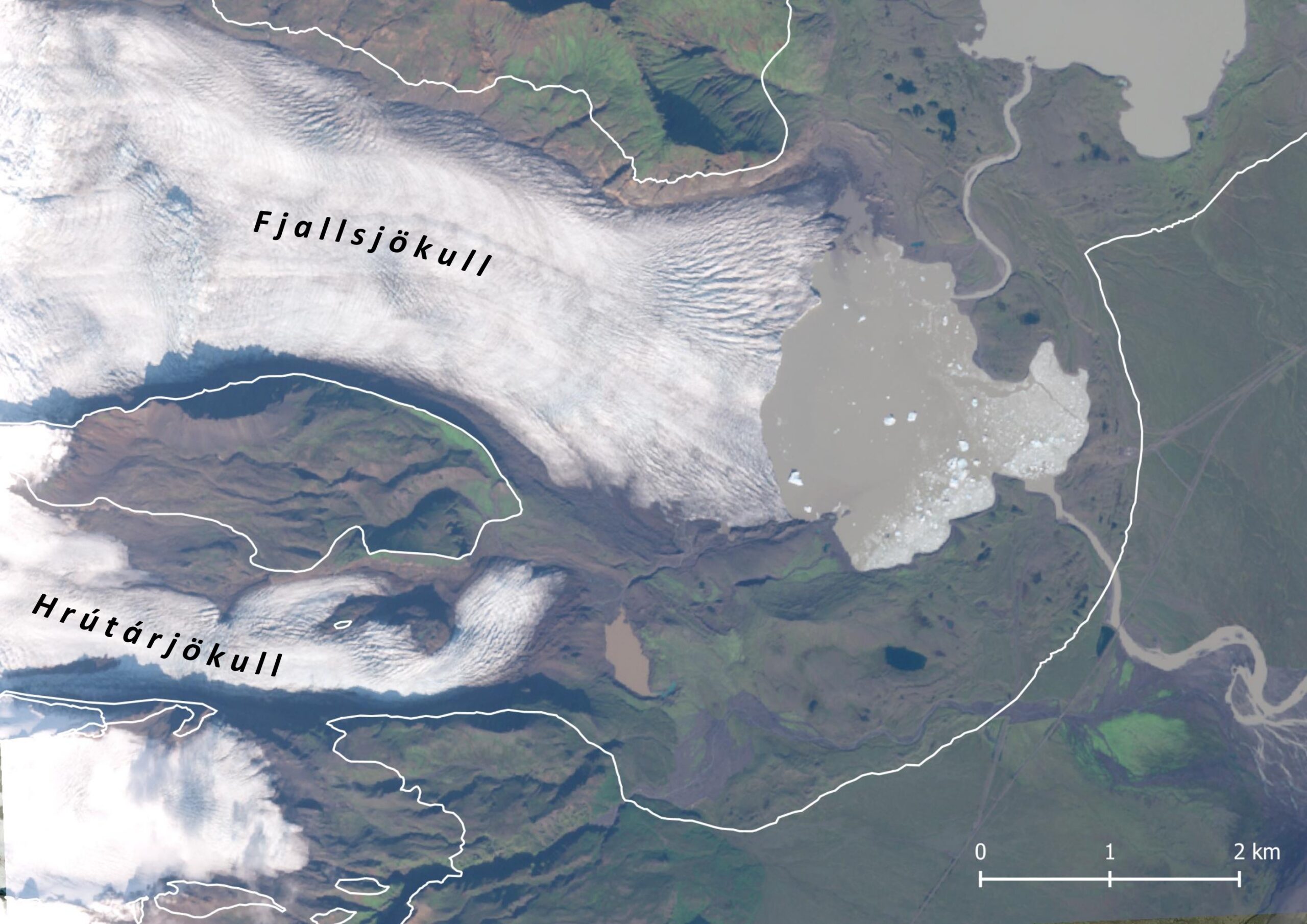
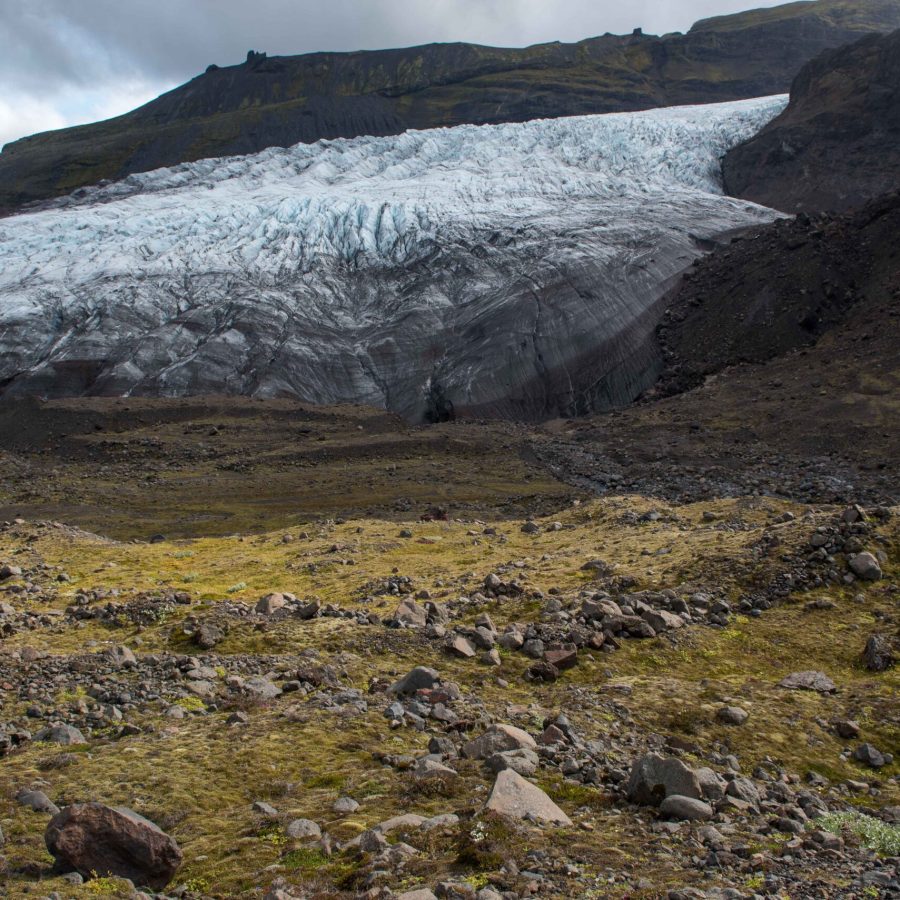
One year after his striking realization, Svein Pálsson was the first man to climb Öræfajökull. From the crater rim he became even more convinced of his theory, looking down on the Hrútárjökull and its bow-shaped structures now known as ogives. Pálsson: ‘’Its surface seemed to be covered with curved stripes, lying right across the glacier. The top of the curves stretched towards the lowland just as if this ice-fall had slid down in a half-melted state or as thick, semiliquid material. Is this not evidence in support of the theory that ice is by nature – without melting – partly liquid like various kinds of resin?’’ It was groundbreaking that Pálsson recognized the plasticity of ice (Thorarinsson, 1960).
While nowadays it is beyond any doubt that glaciers descend the mountain, one could get the impression that glaciers ascend them. After all, their snouts lie further uphill every year. Hrútárjökull is no exception. It reached its maximum extent during the 19th century and formed a piedmont-lobe with Fjallsjökull at the time. This was followed by a long-lasting retreat which stopped in circa 1979, when the glacier started to advance. Hrútárjökull’s growing phase culminated in the early 1990’s, followed by continuous retreat.
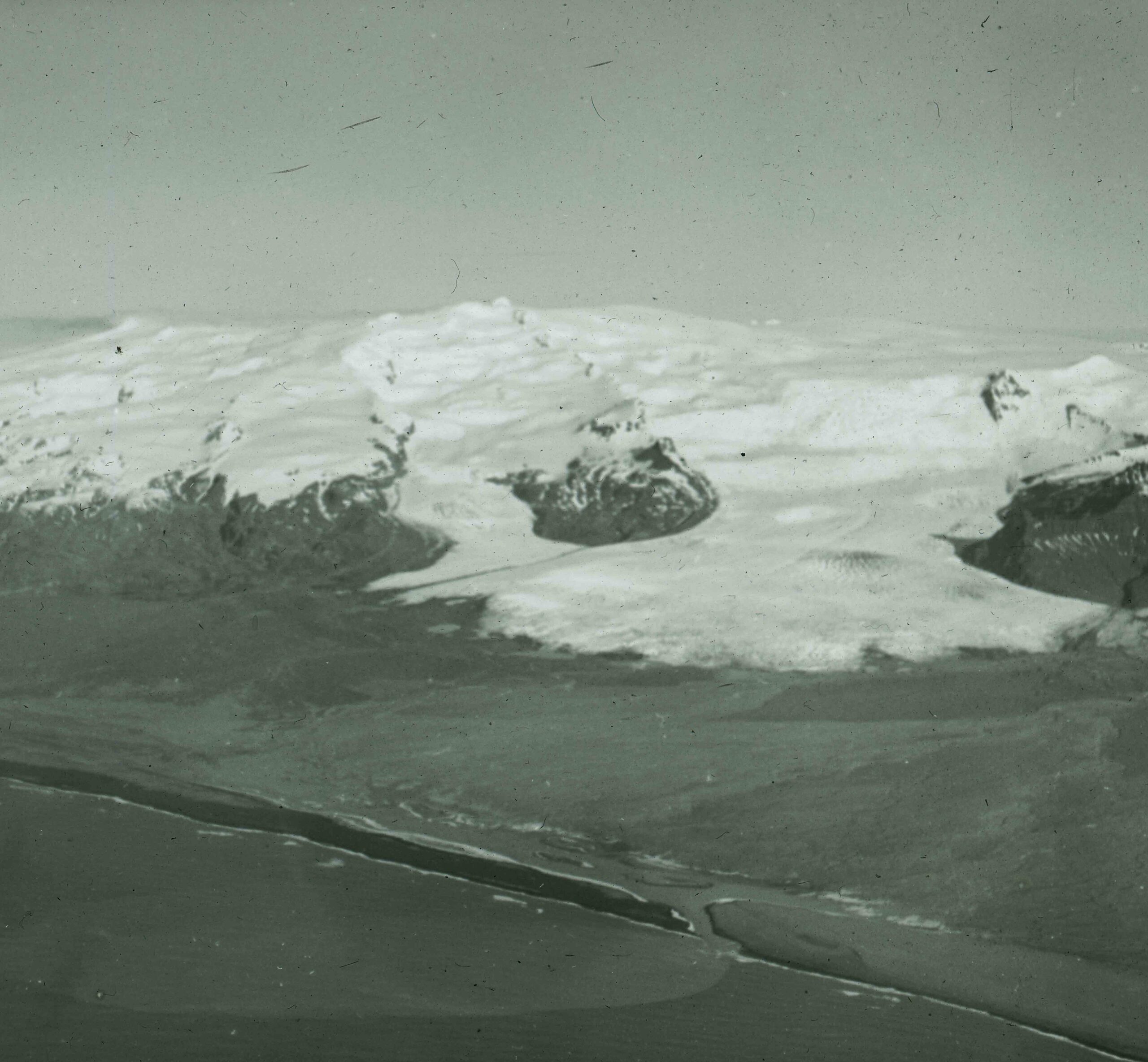
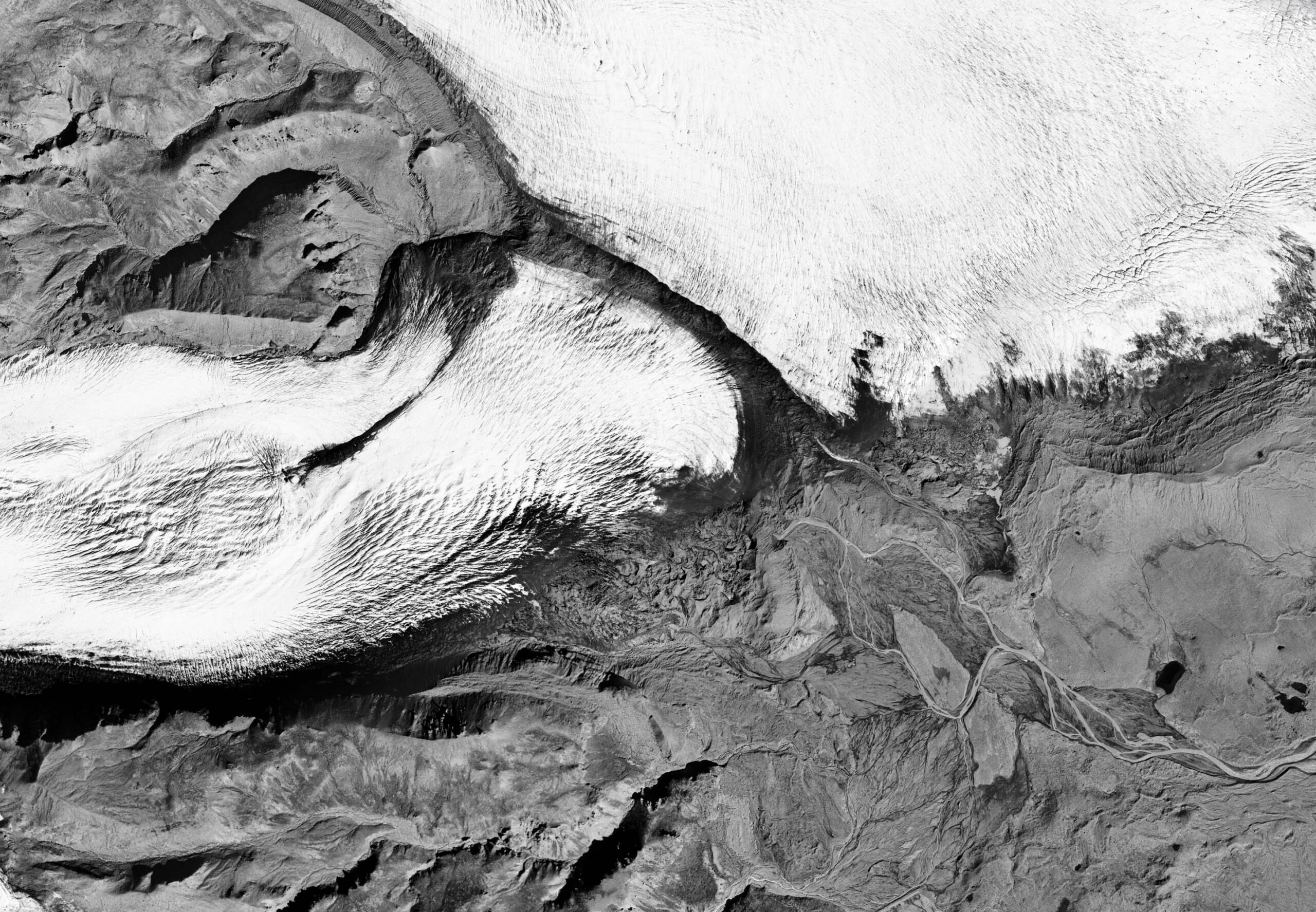
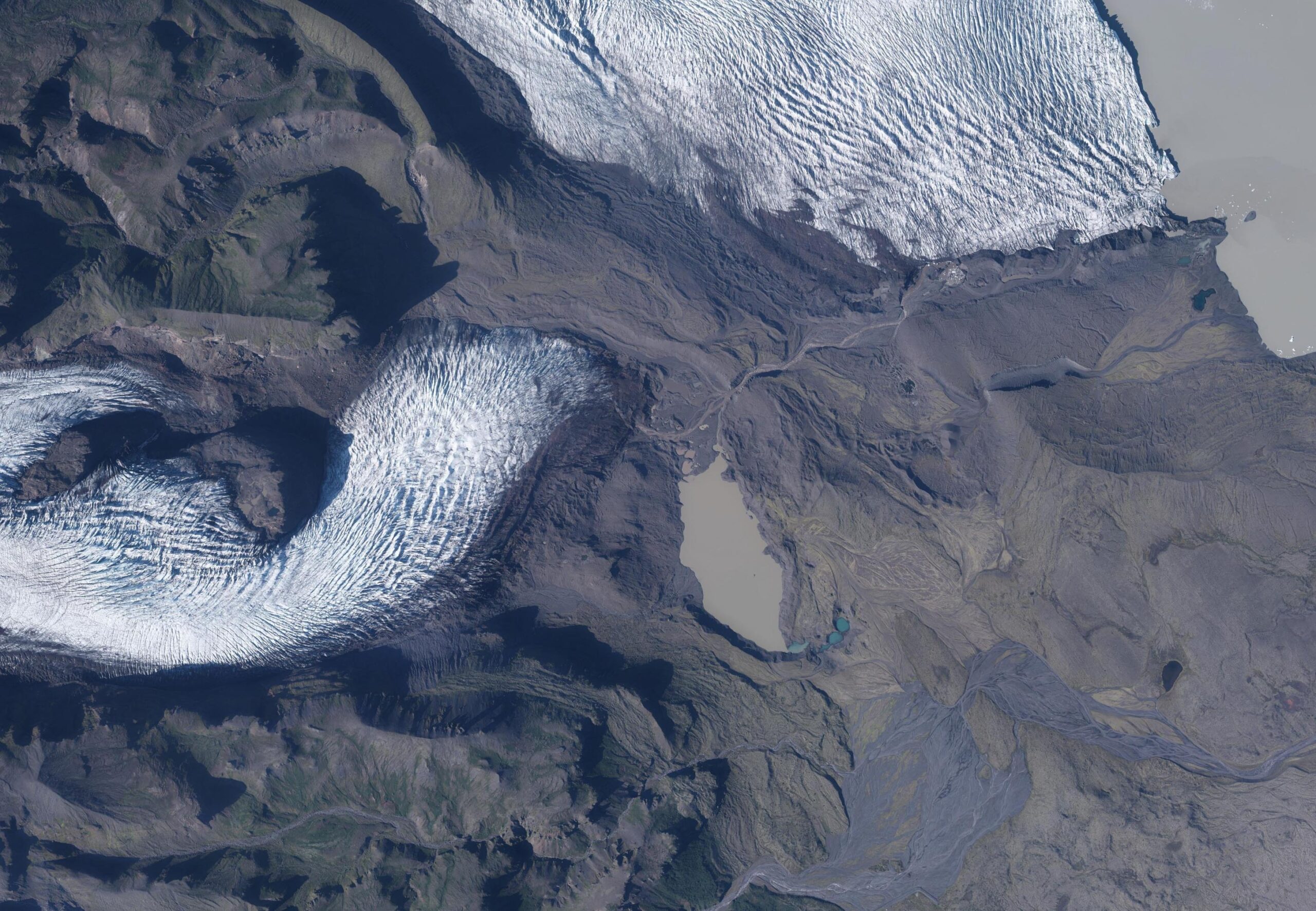
Orthophoto of Hrútárjökull and Fjallsjökull in 1998 (left) and 2021. Source: Landmælingar Íslands and Loftmynda ehf.
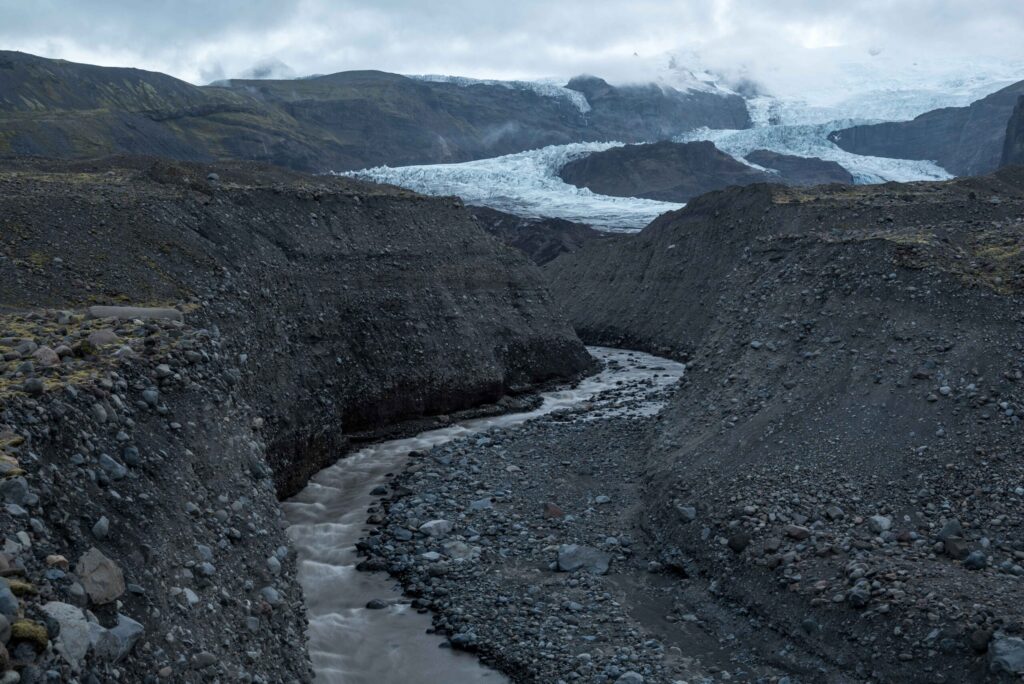
Big changes have occurred in the forefield of Hrútárjökull in the past two decennia. First, the course of its meltwater radically changed. While meltwater followed a southward course at the beginning of this century, it shifted quite suddenly to an eastbound direction by making an incision in the Fitjaöldur ridge, which separated the Hrútárjökull’s meltwater from that of Fjallsjökull. This happened somewhere between 2001 and 2009. A lake close to or on top of the Hrútárjökull must have existed to force such a break-through.
Secondly, a big lake emerged. It was formed thanks to stagnant ice in the overdeepening created by glacial erosion. After the glacier receded, stagnant ice was partially buried in the depression. Therefore, it melted more slowly and the depression could not be filled in with sediment, unlike the surrounding landscape. When the buried ice finally melted away in the years 2009-2016, the ground collapsed and the lake was formed. Although some buried ice is still present, the lake has hardly grown after 2016 (Evans et al., 2023).

In contrast to the significant glacial retreat starting in the mid-1990’s, Hrútárjökull suddenly advanced sixty meters in the years 2016-2019. It turned out to be a temporarily phenomenon, because in the following years every mass and length gain was more than compensated for. That sets the stage for the coming years.
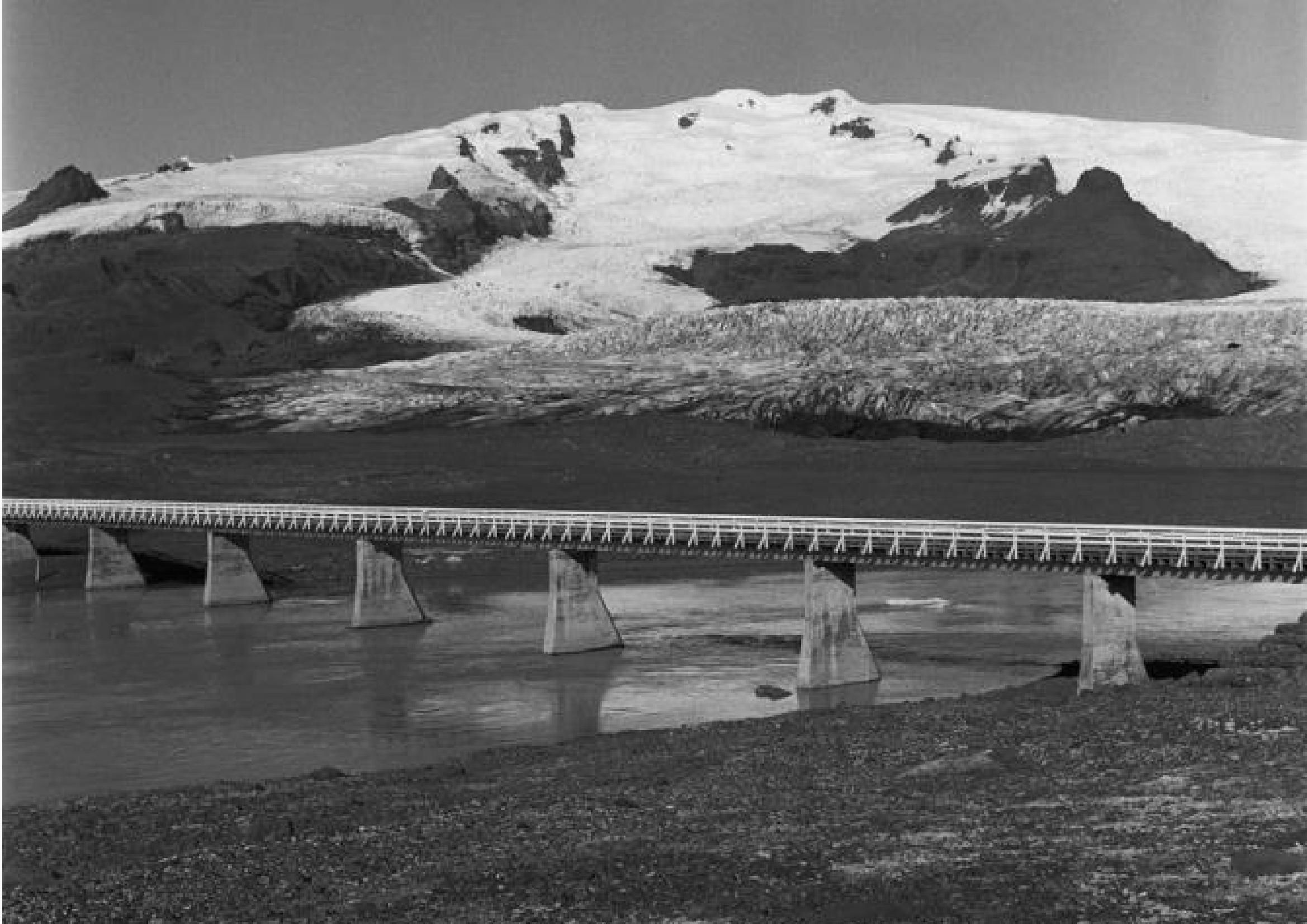
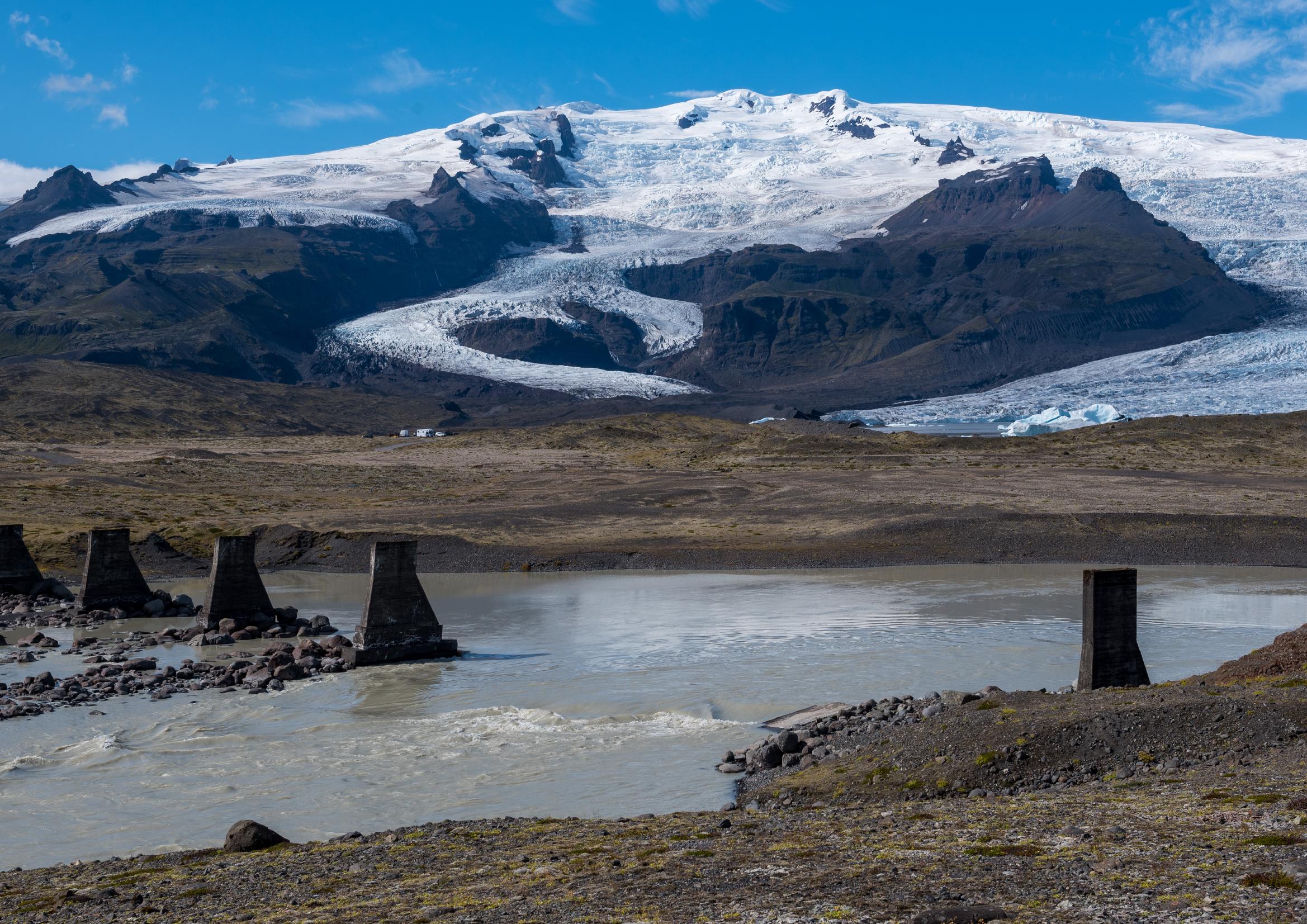
Hrútár- and Fjallsjökull in circa 1960 (left) and 2023. The bridge spanning Fjalsá river is now dismantled. Photographer 1960: Þorsteinn Jósepsson, National Museum of Iceland ASkf-552.
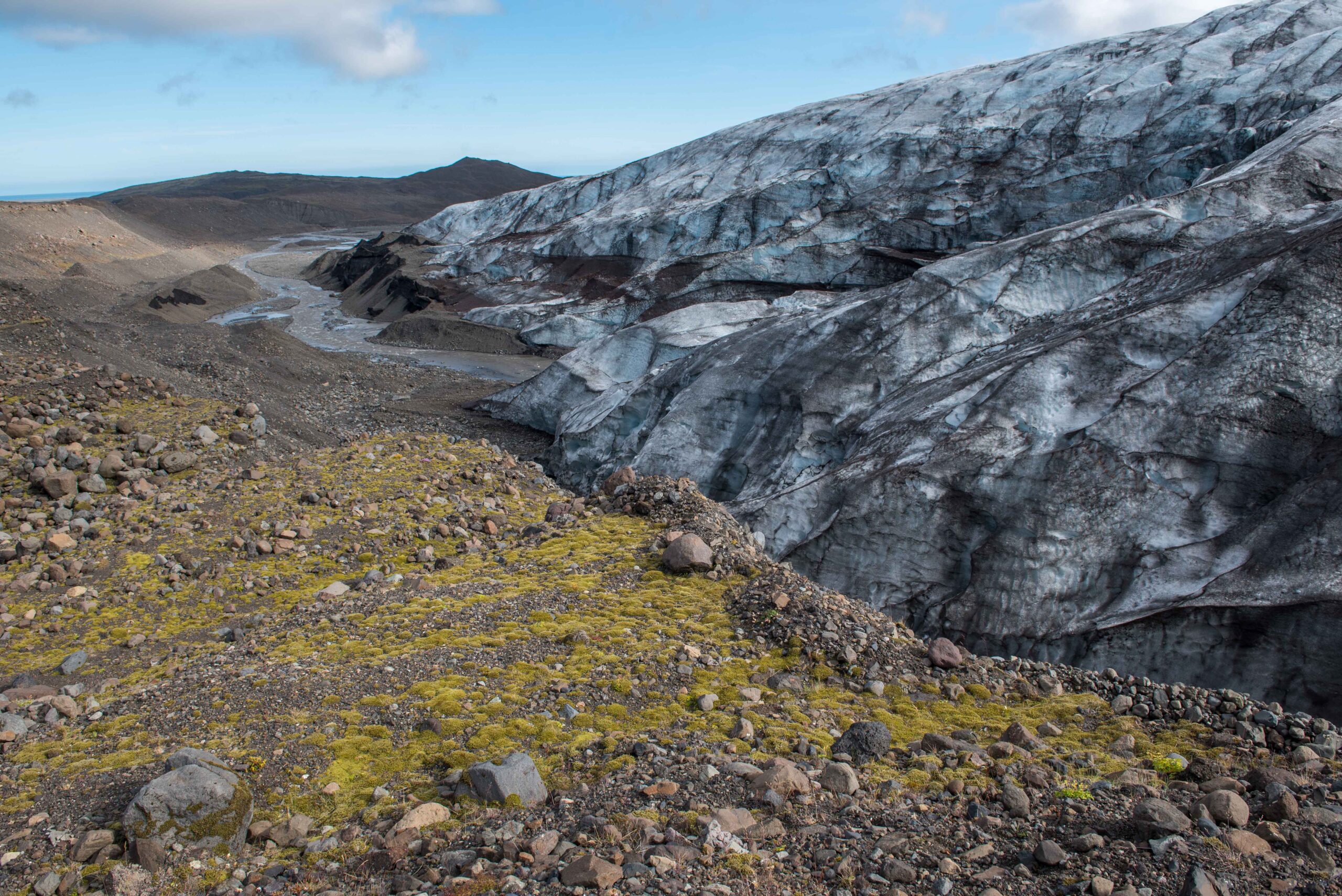
Search within glacierchange: